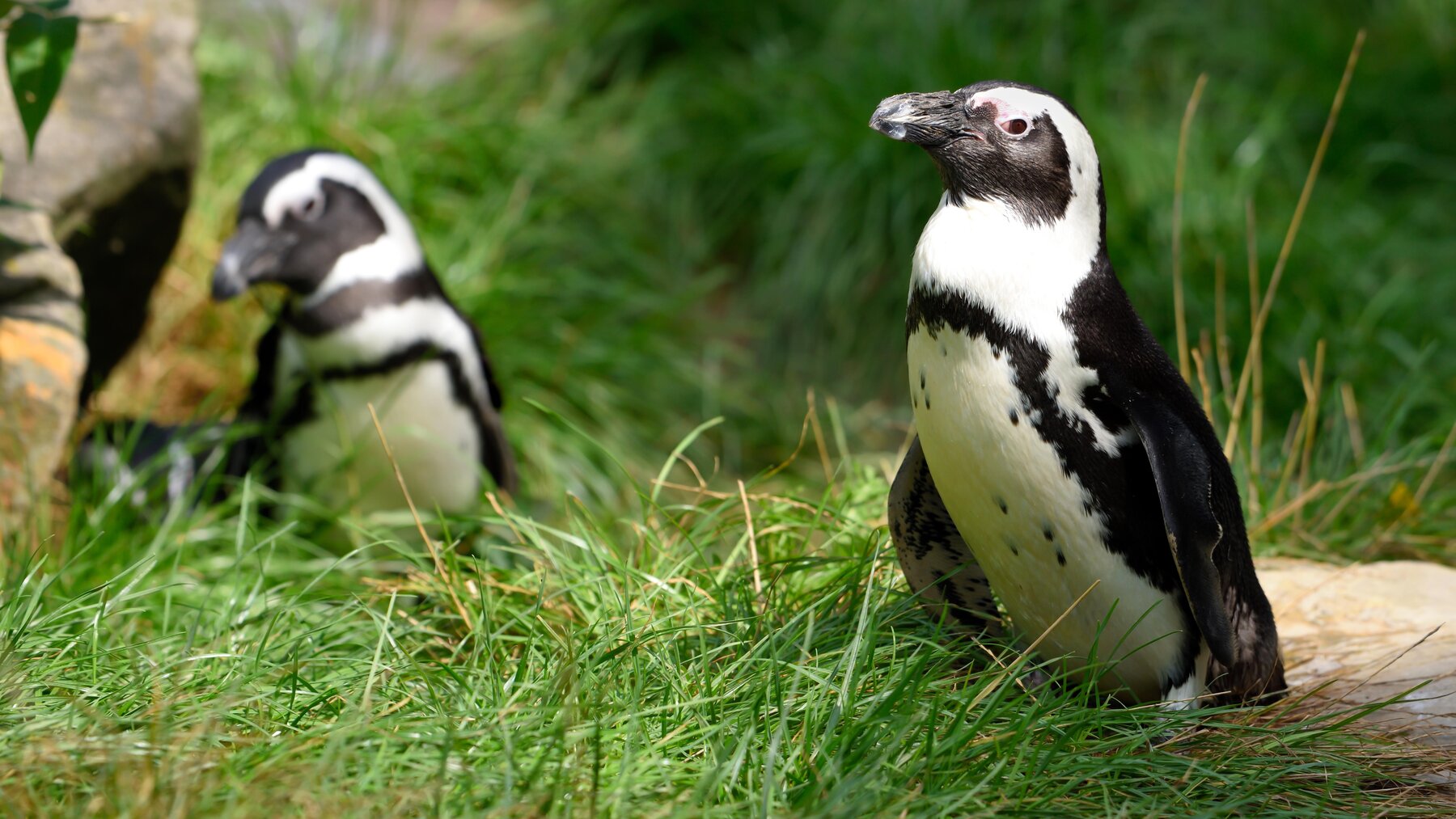Happy International Penguin Day!
Weighing just 3 kg and standing a mere 70 cm tall, these are one of the world’s smallest penguin species. At Zoo Berlin, you can find them next to the sea lions.
African penguins are the only penguin species native to South Africa. They used to be called ‘jackass penguins’ due to their donkey-like bray. But in order to distinguish them from the existing species of jackass penguins native to the polar regions, the birds with the pink patches around their eyes were renamed African penguins.
African penguins are not able to use their wings for lift, but are better swimmers because of it – they move so fast through the water in doing so that it seems they are capable of 'flying' underwater. They owe their nimble capabilities as swimmers to their fin-like wings, which they move quickly using their strong pectoral muscles. They simply use their tale and feet for control.
The black and white feather coat of penguins is hugely practical! They lubricate their 'dress coat' using self-produced oil, which makes it all the more water-resistant. While the bottom layer of their feather coat, which consists of thick down feathers, is used as thermal underwear, the intermediate layer of air between the feathers insulates the penguins from the cold and provides underwater buoyancy.
The colour of the feather coat also protects the African penguin underwater. The white belly and black back are ideal for camouflaging against hungry predators – depending on whether they become 'invisible' in the background of the bright water surface or the dark seabed.
Penguins love company. They breed in colonies and go on the lookout for food together. There is an essential reason behind this, and namely that they are better protected against enemies while in groups. If a birth is on the horizon, the African penguins dig 30–90 cm deep burrows in the ground in which females are able to lay approx. two eggs and which protects them against the heat of the sun. Both partners, which incidentally often remain together for a lifetime, brood alternately in approx. six week sessions.
You just can't have it all as the African penguins would have you to believe. The more gallantly and nimbly they move through the water, the more clumsily they waddle on land upright. Yet penguins look a lot cuter compared to a human with flippers on their feet.
